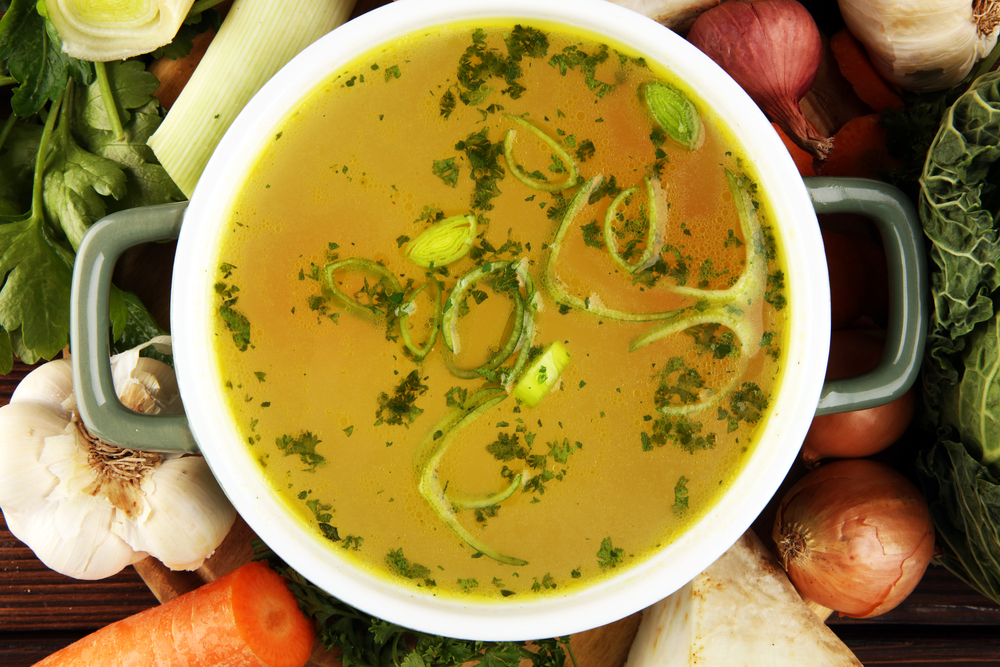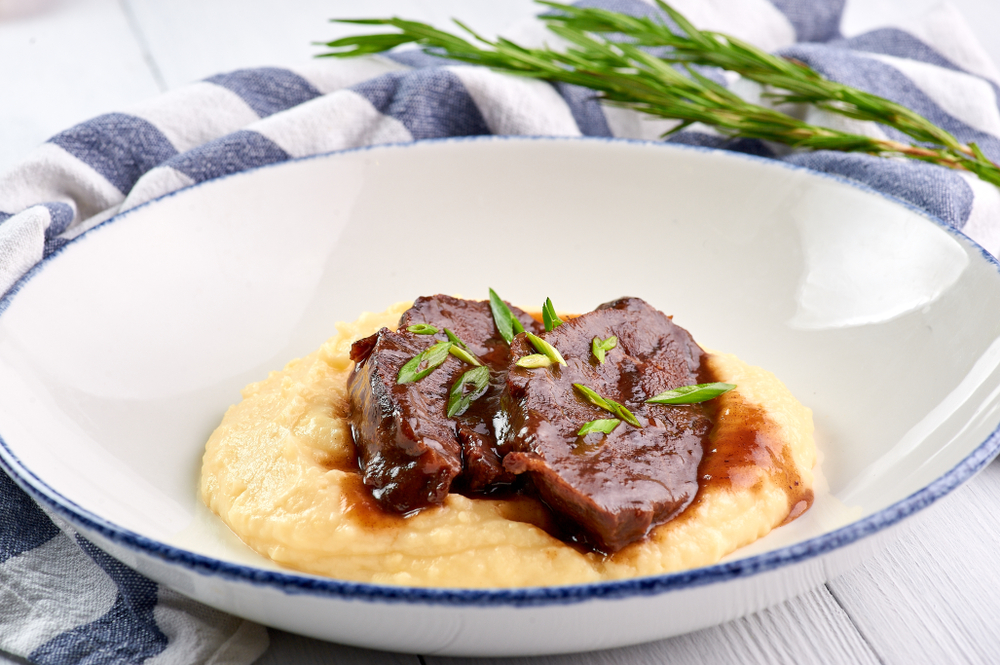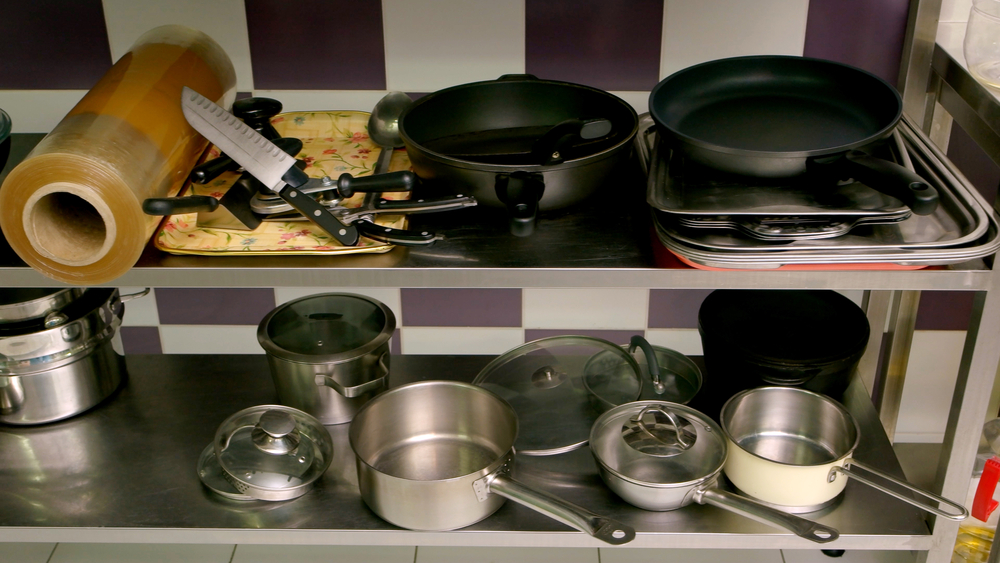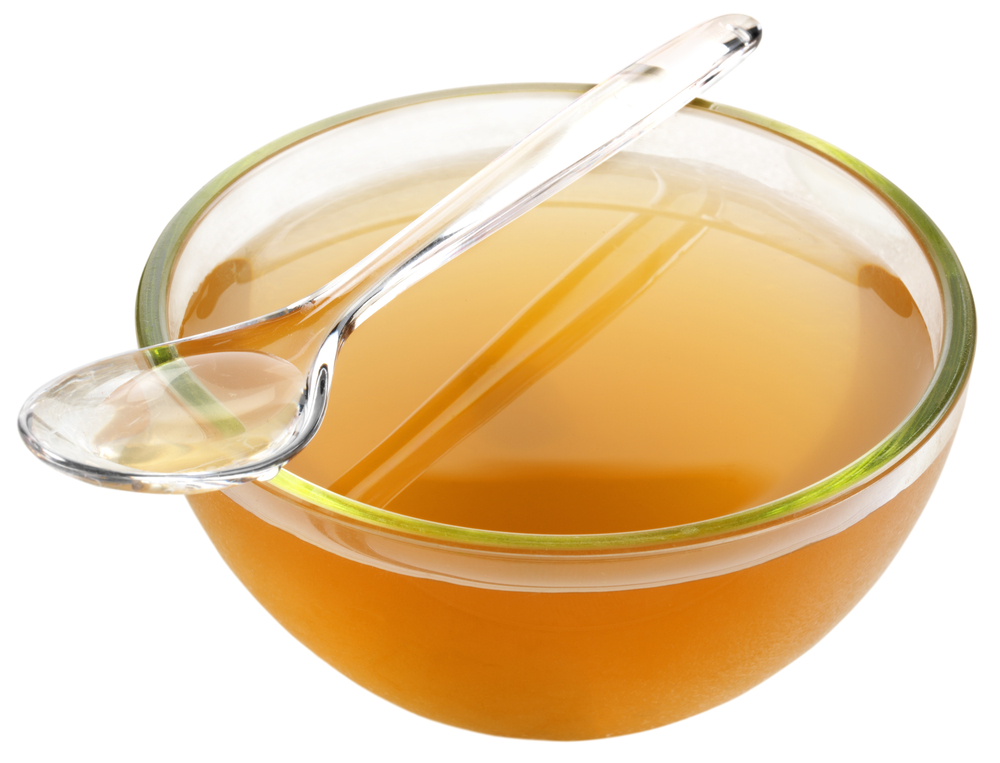As someone who wants to be prepared for emergencies or just wants to stock up on food with a long shelf life, it’s important to know what dried foods last the longest.
Dried foods are a great option because they’re lightweight, easy to store, and can last for years if stored properly. However, not all dried foods are created equal when it comes to longevity.
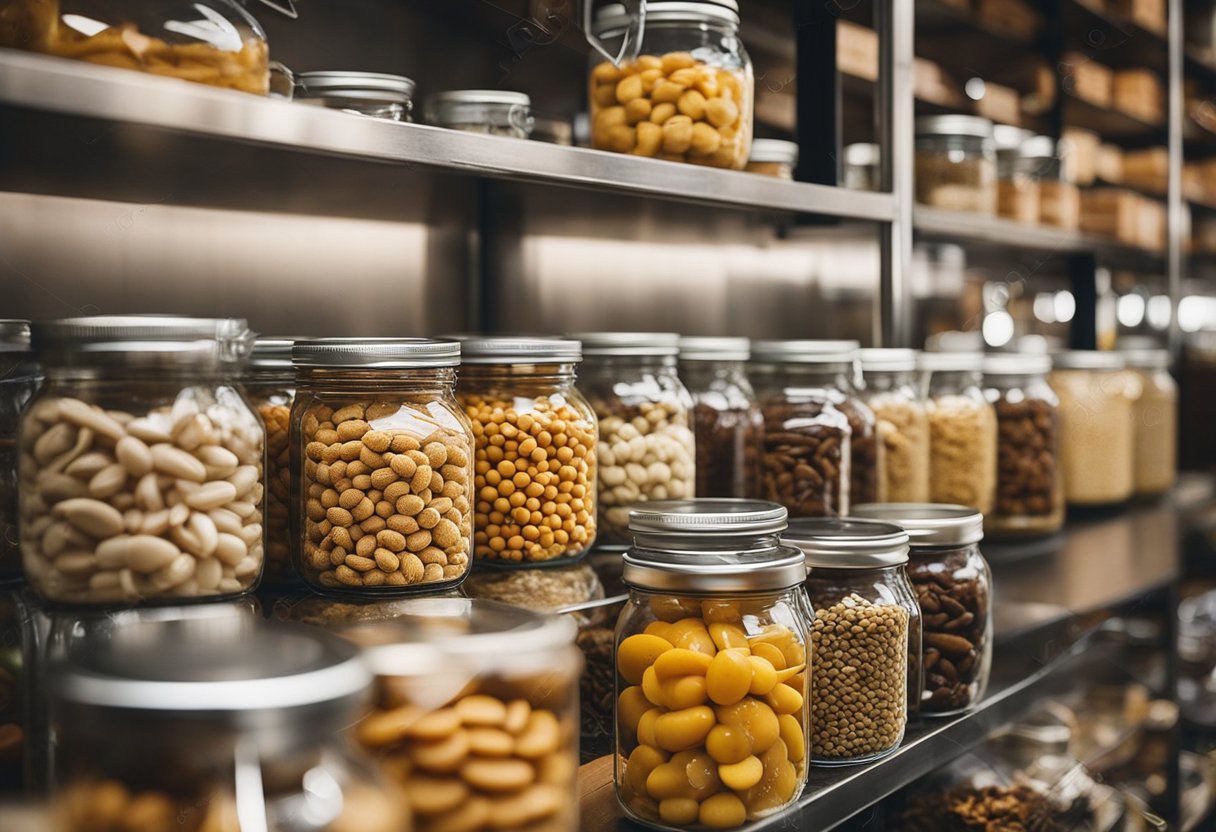
Understanding shelf life is key to knowing which dried foods last the longest. Shelf life is the length of time that food can be stored without becoming unsafe to eat or losing its quality.
Many factors can affect shelf life, such as the type of food, how it’s processed, and how it’s stored. When it comes to dried foods, the main factors that affect shelf life are moisture content, temperature, and exposure to oxygen.
By understanding these factors, you can choose dried foods that will last the longest and store them properly to extend their shelf life.
Key Takeaways:
- Understanding shelf life is important for knowing which dried foods last the longest.
- Moisture content, temperature, and exposure to oxygen are the main factors that affect shelf life for dried foods.
- Proper storage is crucial for extending the shelf life of dried foods.
Understanding Shelf Life
When it comes to dried foods, understanding shelf life is crucial. Shelf life refers to the length of time that a food item can be stored without spoiling or becoming unsafe to eat.
It is important to note that shelf life is not the same as expiration date.
Expiration dates are the dates that manufacturers recommend that a food item be consumed by for optimal freshness and quality.
However, it is important to note that many dried foods can still be safe to consume even after their expiration date has passed.
The USDA recommends using the following guidelines for determining the shelf life of dried foods:
- Store dried foods in a cool, dry place away from direct sunlight and moisture.
- Check for signs of spoilage, such as mold, off odors, or discoloration.
- Use common sense when evaluating the safety of a food item. If it looks or smells off, it is best to err on the side of caution and discard it.
It is also important to note that the shelf life of dried foods can vary depending on the type of food and how it is stored. Here are some general guidelines for the shelf life of common dried foods:
- Rice: 2-3 years
- Pasta: 1-2 years
- Dried beans: 2-3 years
- Nuts and seeds: 6-12 months
- Dried fruit: 6-12 months
- Powdered milk: 6-12 months
Overall, understanding shelf life is important for ensuring that your dried foods remain safe and edible for as long as possible.
By storing your food properly and using common sense when evaluating its safety, you can help extend the shelf life of your dried foods and reduce food waste.
Dried Foods and Their Longevity
As someone who likes to keep a well-stocked pantry, I know that dried foods are an essential part of any long-term food storage plan.
Not only are they convenient and easy to prepare, but they also have a long shelf life, making them ideal for emergency situations or times when fresh food is not readily available.
When it comes to dried foods, there are several different types to choose from, including dried beans, pasta, fruit, corn, legumes, and more.
Each of these foods has a different shelf life, so it’s important to know how long they will last and how to store them properly.
Dried beans are a great source of protein and fiber, and they can last for up to 30 years when stored in a cool, dry place.
However, they do require soaking and cooking before they can be eaten, so they may not be the best option for a quick meal.
Dried pasta is another popular dried food that can last for up to 25 years when stored properly. It’s easy to prepare and can be used in a variety of dishes, making it a versatile addition to any pantry.
Dried fruit is a great snack option that can last for up to a year when stored in an airtight container. It’s a good source of vitamins and fiber, and it’s a great way to satisfy a sweet tooth without indulging in processed sugar.
Dried corn is a staple in many cultures, and it can last for up to 10 years when stored properly. It’s a good source of carbohydrates and can be used in a variety of recipes, including soups, stews, and casseroles.
Dried legumes, such as lentils and chickpeas, are a great source of protein and can last for up to 10 years when stored properly. They’re easy to prepare and can be used in a variety of dishes, including salads, soups, and curries.
In conclusion, dried foods are a great addition to any pantry and can provide a convenient and long-lasting source of nutrition.
By knowing how to store them properly and understanding their shelf life, you can ensure that you always have a supply of healthy and nutritious food on hand.
Canned Foods and Their Shelf Life
Canned foods are a popular choice for long-term food storage due to their extended shelf life.
When stored correctly, canned foods can last well beyond their best-by date, although the quality may not be the same as before. Here are some examples of canned foods and their estimated shelf lives:
- Canned fruit: Canned fruit has a shelf life of about 1-2 years. The high sugar content in canned fruit helps to preserve it, but it is still important to check for signs of spoilage before consuming.
- Canned goods: Canned goods such as vegetables and beans can last up to 5 years if stored in a cool, dry place. It is important to check for dents or bulges in the can before consuming, as this can be a sign of botulism.
- Tuna: Canned tuna can last up to 3-5 years if stored in a cool, dry place. It is important to check for any signs of spoilage before consuming, such as a foul odor or discoloration.
- Soup: Canned soup can last up to 2-5 years if stored in a cool, dry place. However, it is important to note that the quality of the soup may deteriorate over time, resulting in a less desirable taste and texture.
When storing canned foods, it is important to keep them in a cool, dry place away from direct sunlight. It is also important to check the expiration date before consuming and to discard any cans that show signs of spoilage.
By following these guidelines, canned foods can provide a reliable source of nutrition during long-term food storage.
Grains and Their Durability
When it comes to dried foods, grains are an excellent option to consider due to their long shelf life. They are also versatile and can be used in a variety of dishes. Here are some of the most durable grains and their expected shelf life:
- White Rice: White rice can last up to 30 years if stored properly. It is important to keep it in an airtight container in a cool and dry place to ensure its longevity.
- Brown Rice: Brown rice has a shorter shelf life than white rice due to its higher oil content. It can last up to 6 months to a year if stored properly.
- Wheat: Whole wheat grains can last up to 30 years if stored properly. It is important to keep them in an airtight container in a cool and dry place to ensure their longevity.
- Rye: Rye grains can last up to 6 years if stored properly. It is important to keep them in an airtight container in a cool and dry place to ensure their longevity.
- Rolled Oats: Rolled oats can last up to 2 years if stored properly. It is important to keep them in an airtight container in a cool and dry place to ensure their longevity.
It is important to note that the shelf life of dried grains can vary depending on the storage conditions. It is recommended to store all dried foods in a cool, dry, and dark place to ensure their longevity.
Additionally, it is important to check for signs of spoilage such as mold, off odors, or discoloration before consuming.
In conclusion, grains are an excellent option for those looking for durable dried foods with a long shelf life.
When stored properly, they can last for several years, making them a great addition to any emergency food supply or pantry.
Proteins and Their Preservation
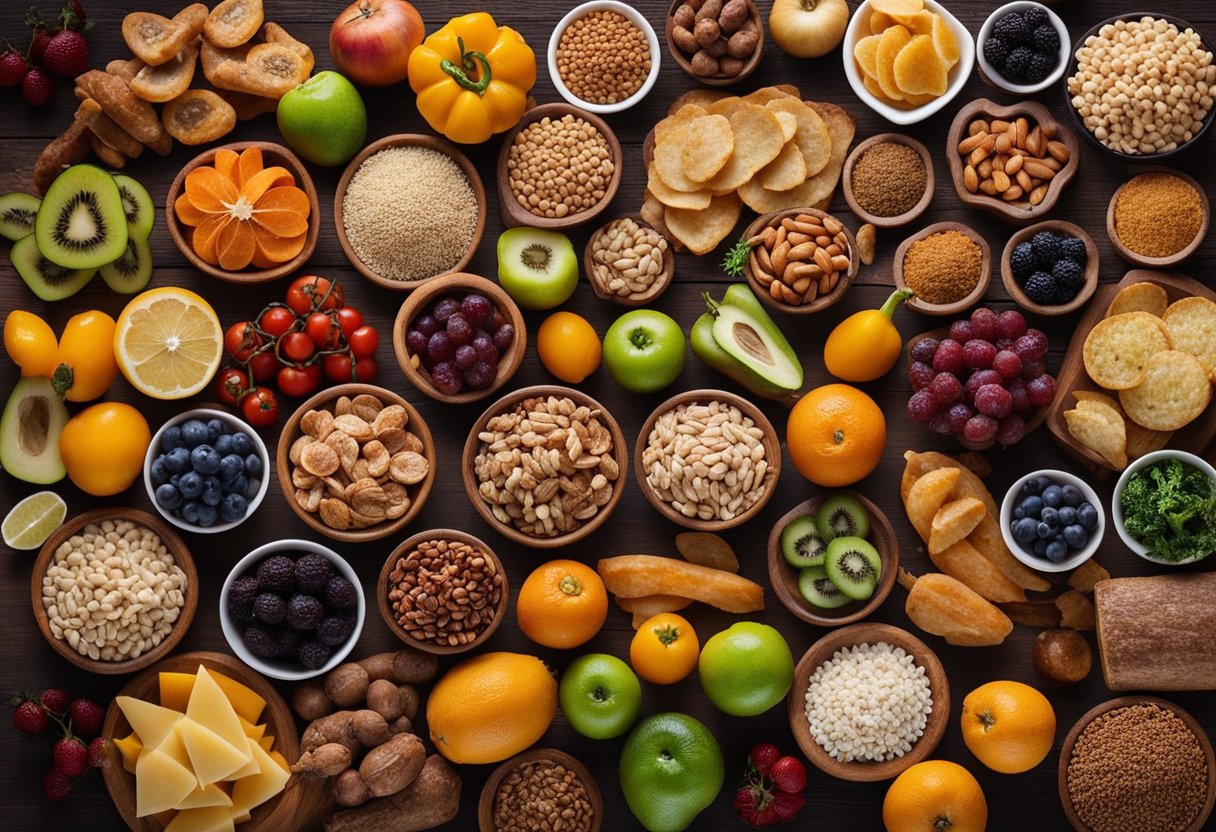
When it comes to dried foods, protein is an essential nutrient that must be included in your storage. Proteins are the building blocks of our body and are necessary for maintaining muscle mass, repairing tissues, and producing enzymes and hormones.
Here are some of the best protein sources that can be stored for a long time:
Beans and Legumes
Beans are an excellent source of protein and can last for up to 30 years if stored properly. They are also rich in fiber, vitamins, and minerals.
Some of the best beans for long-term storage include black beans, kidney beans, and navy beans. You can also store lentils, chickpeas, and split peas for a good source of protein.
Beef Jerky
Beef jerky is a great source of protein that can last for up to two years if stored properly. It is made by drying thin slices of beef and adding salt and other seasonings.
Jerky is a popular snack among hikers, campers, and survivalists due to its long shelf life and high protein content.
Fish
Dried fish is a great source of protein that can last for up to a year if stored properly. It is a popular food in many cultures around the world and can be used in a variety of dishes.
Some of the best fish for drying include salmon, cod, and haddock.
Other Sources of Protein
Other sources of protein that can be stored for a long time include nuts, seeds, and powdered milk. Nuts and seeds are excellent sources of healthy fats, fiber, and protein. Powdered milk is a great source of protein and can be used in a variety of recipes.
When storing protein sources, it is important to keep them in a cool, dry place away from direct sunlight. You should also store them in airtight containers to prevent moisture and insect infestation.
By following these guidelines, you can ensure that your protein sources will last for a long time and provide you with the essential nutrients you need during an emergency.
Sweeteners and Their Stability
When it comes to long-lasting sweeteners, some options are better than others. Here are a few common sweeteners and how well they hold up over time:
Honey
Honey is a natural sweetener that has been used for centuries. It has a long shelf life and can last indefinitely if stored properly. Honey is hygroscopic, meaning it absorbs moisture from the air, which can cause it to crystallize over time.
However, this does not affect its quality or safety. To prevent crystallization, store honey in a cool, dry place and avoid exposing it to heat or light.
Sugar
Granulated sugar is another common sweetener that has a long shelf life. It can last indefinitely if stored in an airtight container in a cool, dry place.
Brown sugar, on the other hand, has a shorter shelf life due to its higher moisture content. It can last up to six months if stored properly.
Maple Syrup
Maple syrup is a natural sweetener that is made from the sap of maple trees. It has a long shelf life and can last up to a year or more if stored properly. To prevent spoilage, store maple syrup in the refrigerator after opening.
Molasses
Molasses is a byproduct of the sugar refining process and is commonly used as a sweetener in baking. It has a long shelf life and can last up to a year or more if stored properly in an airtight container in a cool, dry place.
Jam and Jelly
Jam and jelly are sweet spreads that are made from fruit and sugar.
They have a relatively short shelf life compared to other sweeteners and typically last up to a year if stored properly in the refrigerator after opening. To extend their shelf life, consider canning or freezing them.
Overall, when it comes to long-lasting sweeteners, honey and granulated sugar are the best options. However, if you are looking for a natural sweetener, maple syrup and molasses are also good choices.
Just be sure to store them properly to ensure their longevity.
Beverages and Their Longevity
When it comes to dried beverages, there are a few that have a longer shelf life than others. Here are some of the most common dried beverages and their expected longevity:
- Tea: Dried tea leaves can last for up to two years if stored in an airtight container in a cool, dry place. However, the flavor and aroma of the tea may start to degrade after six months to a year.
- Powdered Milk: Powdered milk can last for up to two years if stored in an airtight container in a cool, dry place. However, the flavor and nutritional value may start to degrade after six months to a year.
- Wine: Dried wine, also known as wine powder, has an indefinite shelf life if stored in an airtight container in a cool, dry place. However, the flavor and aroma may start to degrade after a few years.
- Soy Sauce: Dried soy sauce powder can last for up to two years if stored in an airtight container in a cool, dry place. However, the flavor may start to degrade after six months to a year.
- Instant Coffee: Instant coffee can last for up to two years if stored in an airtight container in a cool, dry place. However, the flavor and aroma may start to degrade after six months to a year.
- Liquor: Dried liquor, also known as liquor powder, has an indefinite shelf life if stored in an airtight container in a cool, dry place. However, the flavor and aroma may start to degrade after a few years.
It’s important to note that the shelf life of dried beverages can vary depending on how they are stored and the conditions they are exposed to.
To ensure the longest possible shelf life, store dried beverages in airtight containers in cool, dry places away from direct sunlight and heat sources.
Overall, dried beverages can be a great addition to your long-term food storage plan. With proper storage, you can enjoy these beverages for months or even years to come.
Fruits and Vegetables
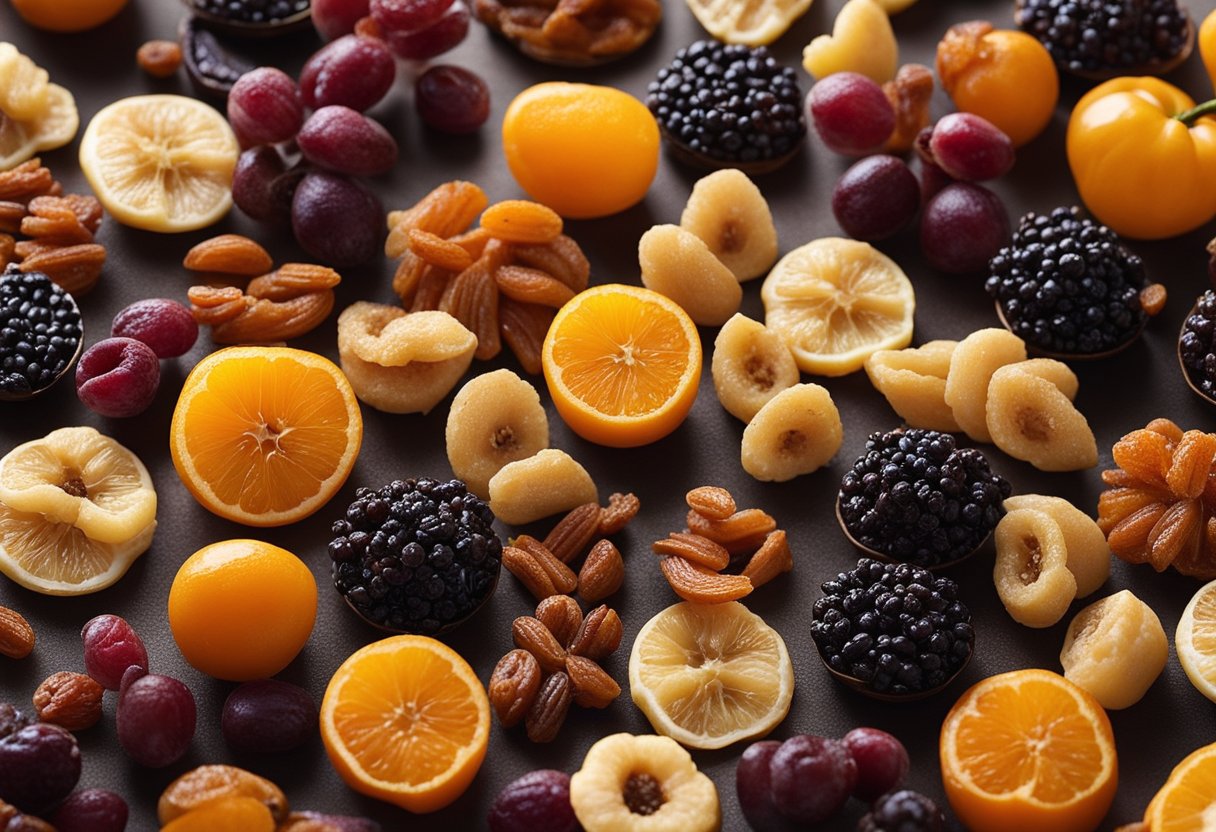
When it comes to dried foods, fruits and vegetables can be a great source of nutrition and flavor. However, not all fruits and vegetables are created equal when it comes to shelf life.
Here are some of the best options for dried fruits and vegetables that can last a long time:
- Dried fruit: Dried fruits such as raisins, apricots, and prunes can last for up to a year if stored in a cool, dry place. They are a great source of fiber, vitamins, and minerals, and can be used as a snack or added to baked goods.
- Canned fruit: Canned fruit can last for up to two years if stored properly. They are a convenient option for those who want to have fruit on hand without worrying about spoilage. However, they can be high in sugar and may not be as nutritious as fresh or dried fruit.
- Carrots: Fresh carrots can last for several weeks if stored properly, but dehydrated carrots can last for up to a year or more. They are a good source of vitamins and minerals, and can be rehydrated for use in soups, stews, and other dishes.
- Tomatoes: Fresh tomatoes have a relatively short shelf life, but dehydrated tomatoes can last for up to a year or more. They are a great source of lycopene, which may help reduce the risk of certain types of cancer.
- Dehydrated fruit slices: Dehydrated fruit slices such as apples, pears, and peaches can last for up to a year if stored in an airtight container. They are a great snack option and can be used in baking or added to oatmeal or yogurt.
Overall, dried fruits and vegetables can be a great addition to your pantry. They are convenient, nutritious, and can last a long time if stored properly.
Condiments and Their Shelf Life
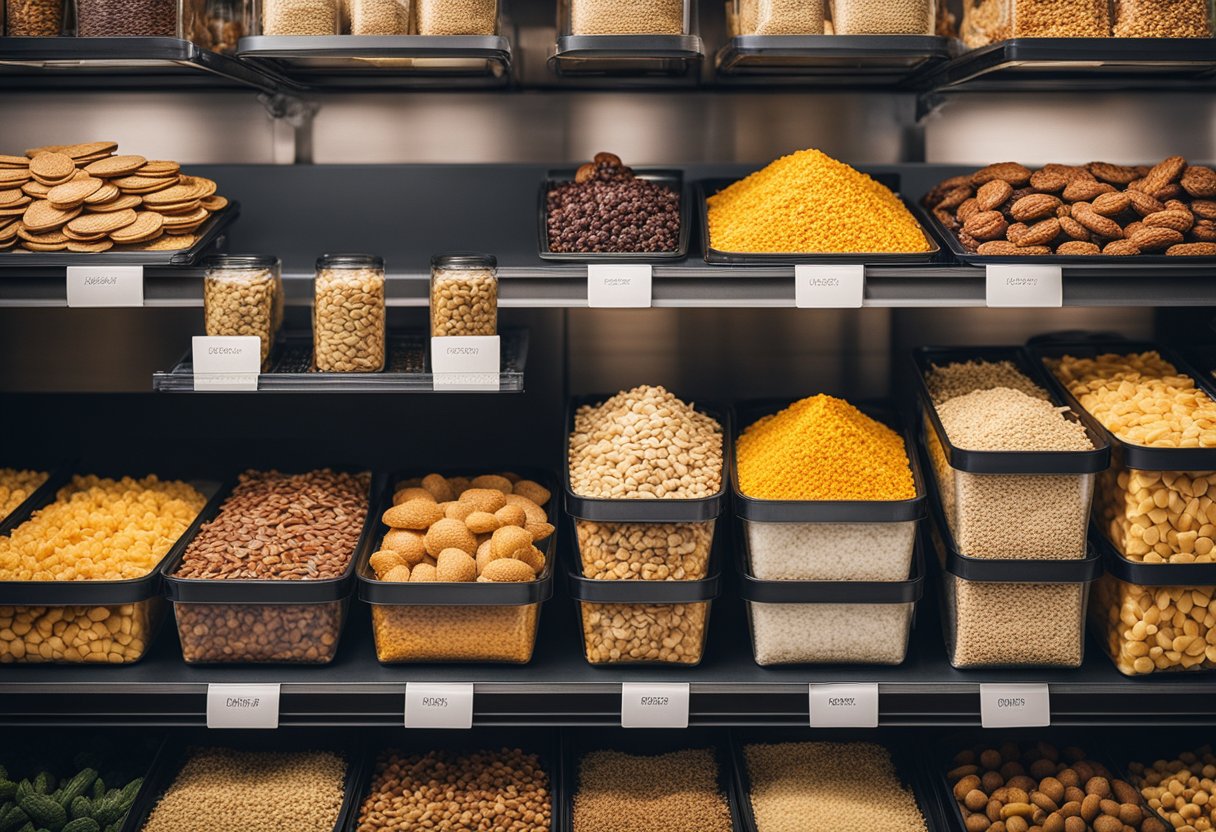
When it comes to condiments, some have a longer shelf life than others. Here are some common condiments and their approximate shelf life:
- Salt: Salt has an indefinite shelf life if stored properly. It does not spoil, but it may clump together if exposed to moisture. To prevent this, store salt in an airtight container in a cool, dry place.
- Vinegar: Vinegar also has an indefinite shelf life and does not spoil. However, its flavor may change over time. To ensure the best quality, store vinegar in a cool, dark place.
- Mustard: Mustard has a shelf life of about 2 years if unopened and stored in a cool, dry place. Once opened, it should be refrigerated and will last for about 1 year.
- Tomato Sauce: Unopened tomato sauce can last for up to 18 months if stored in a cool, dry place. Once opened, it should be refrigerated and used within 5-7 days.
- Olive Oil: Olive oil has a shelf life of about 2 years if stored in a cool, dark place. Once opened, it should be used within 6 months for the best quality.
- Other oils: Other oils such as vegetable oil, canola oil, and coconut oil have a shelf life of about 1-2 years if stored in a cool, dark place. Once opened, they should be used within 6 months for the best quality.
It is important to note that the shelf life of condiments may vary depending on several factors such as storage conditions, packaging, and preservatives.
Always check the expiration date and use your best judgment when consuming condiments past their expiration date.
Snacks and Their Shelf Life
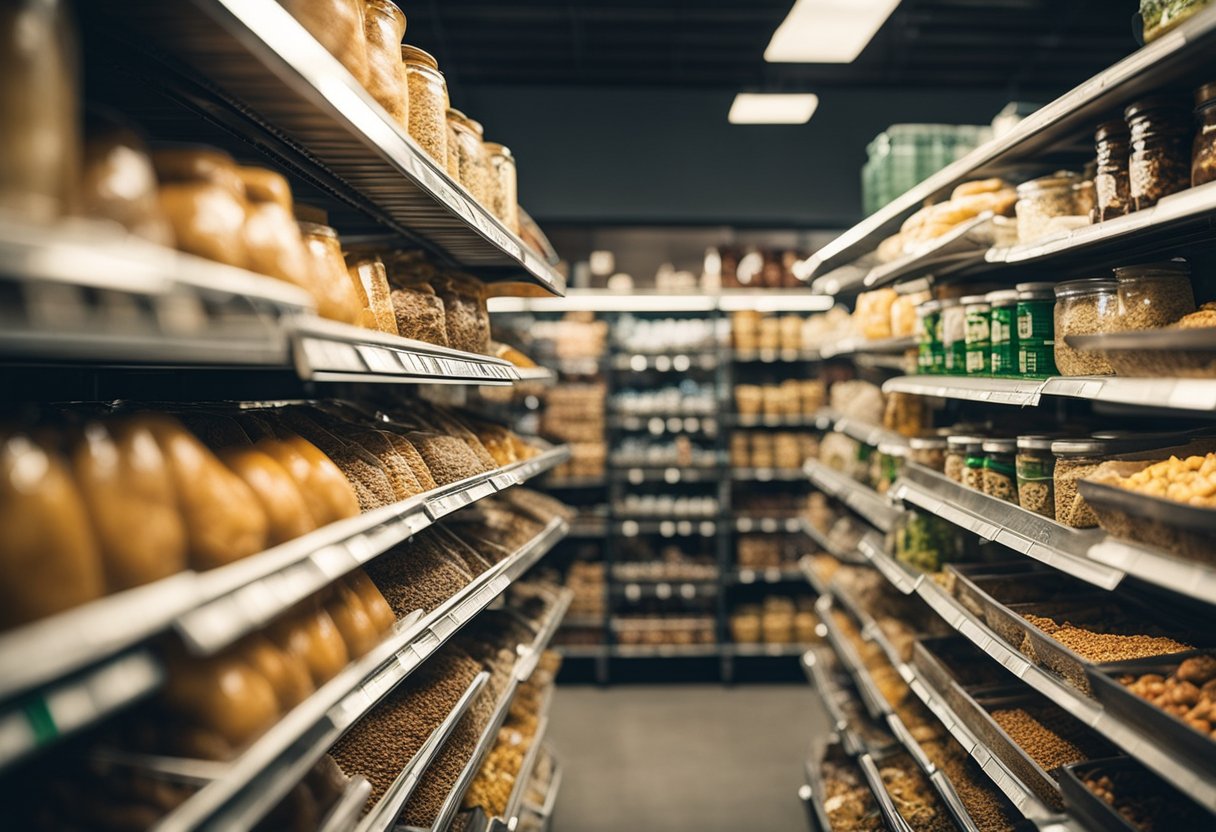
As someone who loves snacking, I know how important it is to have snacks with a long shelf life. Here are some popular snacks and their approximate shelf life:
- Nuts: Nuts are a great source of protein and healthy fats. When stored properly in an airtight container, they can last up to 6 months at room temperature. However, they can last up to a year in the fridge or freezer.
- Chocolate: Chocolate is a delicious treat that can last a long time if stored properly. Milk chocolate can last up to a year if stored in a cool, dry place. Dark chocolate has a longer shelf life and can last up to 2 years.
- Popcorn: Popcorn is a great snack for movie nights or anytime you want something crunchy. Unpopped popcorn kernels can last up to 2 years if stored in an airtight container in a cool, dry place. Popped popcorn can last up to 2 weeks if stored in an airtight container.
- Peanut Butter: Peanut butter is a versatile snack that can be used in many different ways. When stored in the pantry, it can last up to 6 months. However, it can last up to a year in the fridge.
- Dark Chocolate: Dark chocolate has a longer shelf life than milk chocolate. It can last up to 2 years if stored in a cool, dry place. Dark chocolate is also a healthier option than milk chocolate, as it contains less sugar and more antioxidants.
It’s important to note that the shelf life of these snacks can vary depending on how they are stored. To ensure that your snacks last as long as possible, store them in a cool, dry place in an airtight container.
Additionally, if you notice any signs of spoilage, such as a rancid smell or mold, it’s best to throw the snack away.
Overall, these snacks are great options for those looking for snacks with a long shelf life. With proper storage, you can enjoy these snacks for months or even years to come.
Spices, Herbs, and Baking Essentials
When it comes to dried foods that last the longest, spices, herbs, and baking essentials are high on the list. These items can last for years when stored properly, making them a great addition to any long-term food storage plan.
One of the most important things to keep in mind when storing spices and herbs is to keep them in a cool, dry place away from direct sunlight.
This will help to prevent moisture from getting in and spoiling the spices. Many people choose to store their spices in a pantry or cupboard, but a dark, cool basement can also be a good option.
Some of the most common spices and herbs that are used in cooking include garlic, onion, oregano, basil, and thyme.
These herbs and spices can be used to add flavor to a wide range of dishes, from soups and stews to pasta and meat dishes.
When it comes to baking essentials, flour, baking soda, cocoa, and brown sugar are all items that can last for years when stored properly.
Flour should be stored in an airtight container to prevent moisture from getting in and causing it to spoil. Baking soda should also be kept in an airtight container, as it can absorb moisture from the air and lose its effectiveness over time.
Cocoa and brown sugar can both be stored in their original packaging, as long as they are kept in a cool, dry place.
Cocoa should be kept away from direct sunlight, as exposure to light can cause it to lose its flavor and color over time. Brown sugar can be stored in an airtight container to prevent it from hardening.
Overall, spices, herbs, and baking essentials are a great addition to any long-term food storage plan. By storing these items properly, you can ensure that they will last for years and be available whenever you need them.
Proper Storage of Food
As someone who has been storing dried foods for a while, I can tell you that proper storage is key to extending the shelf life of your food. Here are some tips to help you store your dried foods safely and effectively:
- Keep your food in a cool, dry place: Dried foods should be stored in a cool, dry place such as a pantry or cupboard. Avoid storing them in areas that are exposed to direct sunlight or heat as this can cause the food to spoil.
- Store your food in airtight containers: When storing dried foods, it is important to keep them in airtight containers. This helps to prevent moisture and air from getting in, which can cause the food to spoil. Mason jars, plastic containers with tight-fitting lids, and vacuum-sealed bags are all good options.
- Use oxygen absorbers: Oxygen absorbers are small packets that help to remove oxygen from the air inside your food storage containers. This can help to extend the shelf life of your food by preventing oxidation, which can cause the food to spoil.
- Freeze your food: If you want to store your dried foods for an extended period of time, consider freezing them. Freezing can help to extend the shelf life of your food by slowing down the degradation process. Just make sure to use freezer-safe containers and label them with the date they were frozen.
- Check your food regularly: Even if you store your food properly, it is important to check it regularly for signs of spoilage. Look for any signs of mold, discoloration, or strange odors. If you notice any of these, it is best to discard the food.
By following these tips, you can help to ensure that your dried foods last as long as possible. Remember to always store your food in a safe and appropriate location, and to check it regularly for signs of spoilage.
Emergency Food Storage
When it comes to emergency food storage, it is important to have foods that will last a long time without spoiling. Dehydrated and freeze-dried foods are great options for long-term food storage.
They have a longer shelf life than fresh foods and can be easily stored in a stockpile.
Lentils are a great option for emergency food storage because they have a long shelf life and are a good source of protein.
They can be stored in an airtight container for up to 10 years. Bouillon and bouillon cubes are also great to have on hand. They can be used to add flavor to soups and stews and have a long shelf life.
When stockpiling for emergency food storage, it is important to keep in mind the shelf life of the foods. Long shelf life foods such as canned goods, dry goods, and freeze-dried foods are great options.
Powdered eggs are also a good option for emergency food storage. They have a long shelf life and can be used in a variety of recipes.
It is important to have a well-rounded food supply when prepping for emergency situations. Stockpiling foods from the grocery store is a great way to start.
Frozen foods can also be stored for up to a year and are a great option for emergency food storage.
Overall, having a variety of long-term food storage options is important for emergency situations.
By stocking up on dehydrated foods, canned goods, and other long shelf life foods, you can ensure that you and your family will have enough food to last through any emergency.
Related posts:
Frequently Asked Questions
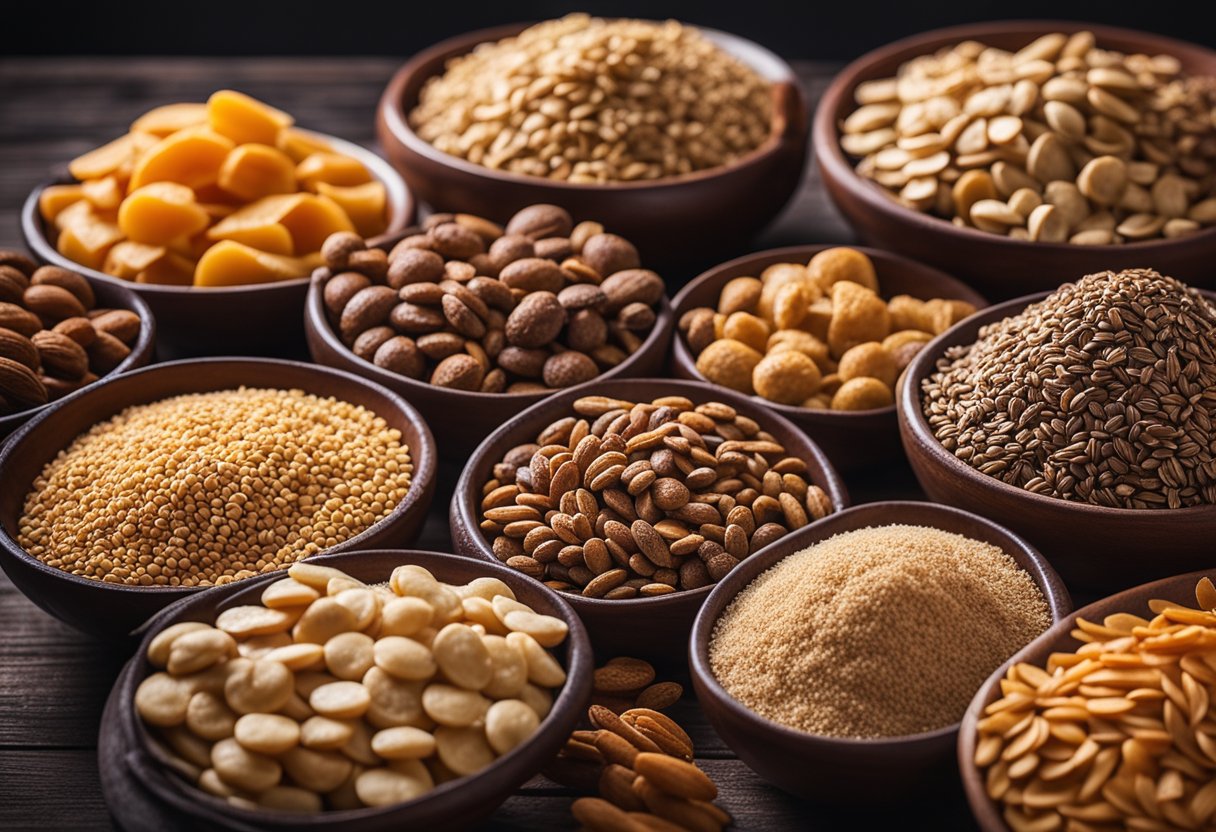
What are some non-perishable food options with a long shelf life?
Some non-perishable food options with a long shelf life include dried beans, pasta, rice, canned fruits and vegetables, and dried fruits and nuts. These foods can be stored in a cool, dry place and can last for several years.
Which foods can be stored for an extended period of time without refrigeration?
Foods that can be stored for an extended period of time without refrigeration include dried fruits and vegetables, nuts and seeds, jerky, and canned goods. These foods can be stored in a pantry or other cool, dry place and can last for several years.
What are some healthy snacks with a long shelf life?
Some healthy snacks with a long shelf life include dried fruits, nuts and seeds, jerky, and whole grain crackers. These snacks are high in protein and fiber and can provide sustained energy throughout the day.
What are some long-lasting recipes for dry foods?
Some long-lasting recipes for dry foods include bean soups, rice and bean dishes, and pasta salads. These recipes can be made with non-perishable ingredients and can be stored in the pantry for several months.
What are some survival foods that can be stored for a long time?
Some survival foods that can be stored for a long time include dehydrated or freeze-dried meals, canned goods, and dried fruits and vegetables. These foods can provide sustenance in emergency situations and can be stored for several years.
What are some non-perishable food options that can last for 25 years or more?
Some non-perishable food options that can last for 25 years or more include freeze-dried meals, powdered milk, and dried beans and grains. These foods are often used for long-term food storage and can provide sustenance in emergency situations.


